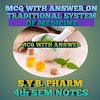PHARMACOGNOSY AND PHYTOCHEMISTRY – I PRACTICA
ANALYSIS OF HONEY BY CHEMICAL TEST
EXPERIMENT NO.5
Aim: Analysis of Honey by
chemical tests.
Reference: 1. Mayur R. Bhurat, Md. Rageeb Md. Usman,
Sanjay A. Nagdev, Practical Pharmacognosy & Phytochemistry – I, Published
by S. Vikas And Company (Medical Publisher) Ppage. No. 20 – 21.
2. Dr. K.R Khandelwal, Textbook of Practical Pharmacognosy, Pubished by Nirali Prakashan, Sixth Edition, page. No. 163.
Requirements:
Apparatus: Test
tubes, Beaker, Holder, Burner, Water bath, Tripod stand, Copper gauze etc.
Chemicals: a-naphthol, Conc.H2SO4, Fehling A & B
solution, Ether, Resorcinol, HCl, Iodine solution, Vinegar solution etc.
Theory:
Biological
Source: Honey is the saccharine liquid
prepared from the nectar of the flowers by the hive-bee Apis mellifera, Apis
dorsata and bees of other species of Apis.
Family:
Apidae.
Description:
Color: Slight
yellow to brown yellow.
Odor:
Pleasant.
Taste: Sweet.
Solubility: It is
soluble in water and insoluble in alcohol.
Chemical
Constituents: Honey consists of
chiefly glucose 35% (+3%), fructose 45% (+5%), sucrose, 2-3% and water
(14-20%). The other constituents of honey are Dextrin (0.06-1.25%), maltose,
gum, traces of succinic acid, acetic acid, volatile oil, enzymes, Vitamins, Amino
acids, Proteins, coloring matters, etc.
Uses: Honey
is used as nutritive, demulcent, mild laxative. It is used as an important
component of linctuses and cough mixtures, sweetening agent, antiseptic and bactericidal.
This is also used as a vehicle in Ayurvedic and Unani preparations. Recently, it is used in the preparation of creams, lotions, soft drink and candies also.
Chemical Test of
Honey:
|
Sr.No |
Chemical test |
Observation |
Inference |
|
General
chemical test for carbohydrate |
|||
|
01 |
Molisch’s test: In a
test tube, add 2 ml of the test carbohydrate solution and 2 drops of
a-naphthol solution. Carefully incline the tube and pour drop wise conc.
H2SO4 using a dropper, along the sides of the tube. |
Violet
coloring at the junction of the two liquids. |
Carbohydrate
is present |
|
02 |
Reducing Sugar Test: Heat
honey to this add a drop of mixture of Fehling’s solution A & B |
Brick
red colour of cuprous oxide |
Presence
of monosaccharide
|
|
Purity
Test For Honey |
|||
|
03 |
Fieche’s test: Take
about 3ml of honey + 2ml of ether and shake thoroughly and allow the 2 layers
to separate and evaporate to dryness. The upper ethereal layer is separated
and put in a evaporating dish and evaporate, to the residue add 1% resorcinol
and HCl |
Transient
pink colour
Permanent
red colour
|
Natural
honey is present
Adulterated
honey (Invert sugar)
|
|
04 |
Hold
a lightened match stick above the honey |
It
will melt
Somewhat
melting with hiss sound |
Natural
honey is present
Adulterated
honey is present |
|
05 |
Take
a glass of water and add one teaspoon honey in that glass of water |
It
will settle down at bottom.
It
get mix with water |
Natural
honey is present
Adulterated honey is present |
|
06 |
Take
a glass of water and add one teaspoon honey in that glass of water then add
2-3 drop of iodine solution |
No
immediate blue color formed
Immediate
blue color formed |
Natural
honey is present
Adulterated honey is present
|
|
07 |
Take
honey and add it in some water then add 2-3 drop of vinegar solution |
No
foam observed
Foam
observed |
Natural
honey is present
Adulterated
honey is present |
Result: The given Sample Crude drug was identified by
performing the chemical test and the sample was found to be Honey.
















0 Comments
Please do not enter any spam link in the comment box.